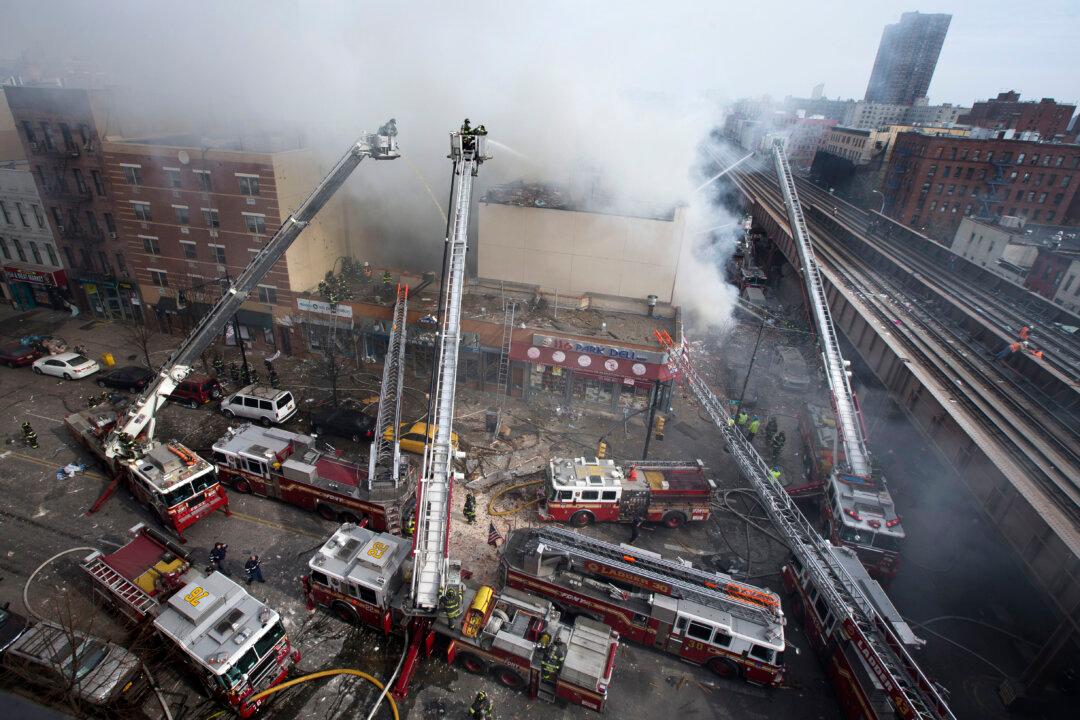Natural gas consumption is starting to decline in residential and commercial sectors in the United States, according to the U.S. Energy Information Administration.
Gas leaks have also declined in past years, but an explosion in East Harlem Wednesday that caused two buildings to collapse, seven fatalities, and many more injured or missing had residents concerned.
Authorities have said the cause of the explosion--which occurred right before investigators from Con Edison and firefighters got on scene--was likely due to a gas leak. There are reports of nearby residents who say they’ve been smelling gas for weeks, but no calls were made to Con Edison, 311, or 911 in that time period.
Recent reports released this year have pointed to the aging infrastructure and use of cast iron pipe mains as a problem. Authorities have not yet been able to pinpoint the cause of the the explosion.
Mayor Bill de Blasio said in an update to the incident noon Thursday that aging infrastructure is a challenge. “We know this is a fundamental challenge of New York City or any older city,” de Blasio said.
Natural gas is odorless, but companies like Con Edison add the chemical Mercaptan so customers who catch the “rotten-eggs” scent are alerted if there is a leak. New York State’s requirement is that the odor be detectable at 0.5 percent.
Con Edison spokesperson Sidney Alvarez says the danger threshold is when the gas is between 5-15 percent of the surrounding air. Below 5 percent or above 15 percent, the gas will not cause an explosion, he said.
Natural Gas Emissions
Gas leaks are more pervasive than officials think, says Robert Jackson, who led a Duke University study on natural gas emissions.
The research team had examined the Washington, D.C. area over a two month period and found nearly 6,000 leaks of methane, the main component of natural gas. Dozens of the leaks could have caused explosions, and some had concentrations up to 10 times of what would cause an explosion.
Jackson wrote he was surprised to find that four months after the leaks were reported, the same locations had leaks again.
Century-old cast iron gas mains are one concern. Pipeline safety in the United States has increased in recent decades, but incidents involving natural gas pipelines still cause an average of 17 fatalities and $133 M in property damage annually, according to a Duke University report.
According to the American Gas Foundation, about 9 percent of distribution main services in the United States are considered leak-prone.
Con Edison CEO John McAvoy says the cast iron pipes can really last for hundreds of years. At a briefing in New York after the East Harlem explosion he said the company considers many factors when replacing them. In 2011, there was a water service main replacement on the same block and Con Edison had replaced 75 feet of main.
Currently 38 states have a program to accelerate replacement of natural gas delivery pipelines. There is no national study tracking gas leaks.
According to US DOT’s Pipeline & Hazardous Materials Safety Administration, “The biggest threat to cast or wrought iron pipe is earth movement.”
The cold weather causes some movement and contraction in materials from freezing as well. At the East Harlem site, Con Edison did checks Feb. 8 and 10 and found no leaks.
According to American Gas Association, natural gas utilities are installing plastic pipes at the rate of 30,000 miles per year.





